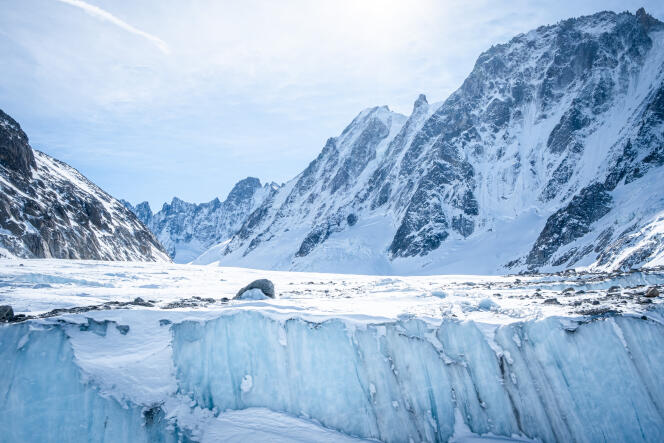


Climate change now affects every region, including those previously considered safe from extreme heat. The ice shelves of Antarctica were the subject of several studies published in the fall. Following this, the Mont Blanc glaciers, whose thickness varies between 100 and 300 meters, are worrying the scientific community.
After being fairly stable for decades, the glaciers situated at altitudes above 2,100 meters, and even over 3,500 meters, lost up to three or four meters in thickness during the 2021-2022 ice season. "For the previous nine years, the lower reaches had been thinning considerably, but ice at higher altitudes was holding up well. This situation has changed recently," noted Etienne Berthier, researcher at the French National Centre for Scientific Research's (CNRS) Laboratory for Study of Geophysics and Spatial Oceanography (LEGOS). "What's happening above 3,500 meters is truly exceptional and unexpected. The consequences of global warming are becoming visible everywhere."
In a study published in the Journal of Glaciology on November 29, 2023, and published on CNRS' National Institute for Universal Sciences website on December 14, Berthier and his colleagues Christian Vincent and Delphine Six detailed results of observations by the French Space Agency's Pleiades satellite, as well as field surveys of three different glaciers.
According to them, the Argentière glacier lost an average of 3.41 meters in thickness between August 2021 and August 2022. The Mer de Glace thinned by 3.91 meters and the Bossons glacier by 2.84 meters. Average annual decreases in the years 2012-2021 were only 0.63 meters, 0.78 meters and 0.19 meters respectively.
Above 3,500 meters, the changes are even more striking. At 3,750 meters, the Mer de Glace has lost just over four meters in thickness. This zone had remained unchanged for the previous nine years. On the Bossons glacier, thinning varied from three meters to one meter between 3,850 and 4,800 meters. No movement was previously detected.
"Our analysis shows that high-altitude glaciers, mostly stable over the past 100 years, are now responding to the impact of climate change," wrote the authors. "Our measurements suggest that the glaciers of Mont Blanc may have entered a new regime."
Such losses of mass at high altitudes have not been seen since at least the beginning of the 20th century. According to these scientists, based on measurements by mountaineer Joseph Vallot, the thickness of the glaciers around the summit of Mont Blanc had not varied by more than three meters between 1905 and 2005.
You have 45% of this article left to read. The rest is for subscribers only.
